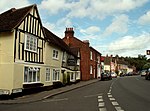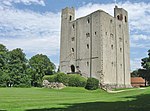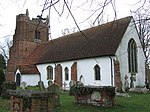Great Maplestead
Braintree DistrictCivil parishes in EssexEngvarB from July 2016Villages in Essex

Great Maplestead is a village and a civil parish in the Braintree District, in the English county of Essex. In the sixteenth century the Deane family were Lords of the Manor of Great Maplestead. Later in the century the manor passed by marriage to Sir John Tyndal, Master of the Court of Chancery. It was here in 1618 that Tyndal's daughter Margaret Tyndal Winthrop married John Winthrop, a crucial figure in the founding of Massachusetts. In the 1870s the Imperial Gazetteer of England and Wales said that Great Maplestead "took its name from maple trees, which anciently flourished on or around its site; and has the repute of being a very healthy place".
Excerpt from the Wikipedia article Great Maplestead (License: CC BY-SA 3.0, Authors, Images).Great Maplestead
Church Street, Essex
Geographical coordinates (GPS) Address Nearby Places Show on map
Geographical coordinates (GPS)
| Latitude | Longitude |
|---|---|
| N 51.981 ° | E 0.631 ° |
Address
Church Street
Church Street
CO9 2RQ Essex, Great Maplestead
England, United Kingdom
Open on Google Maps






